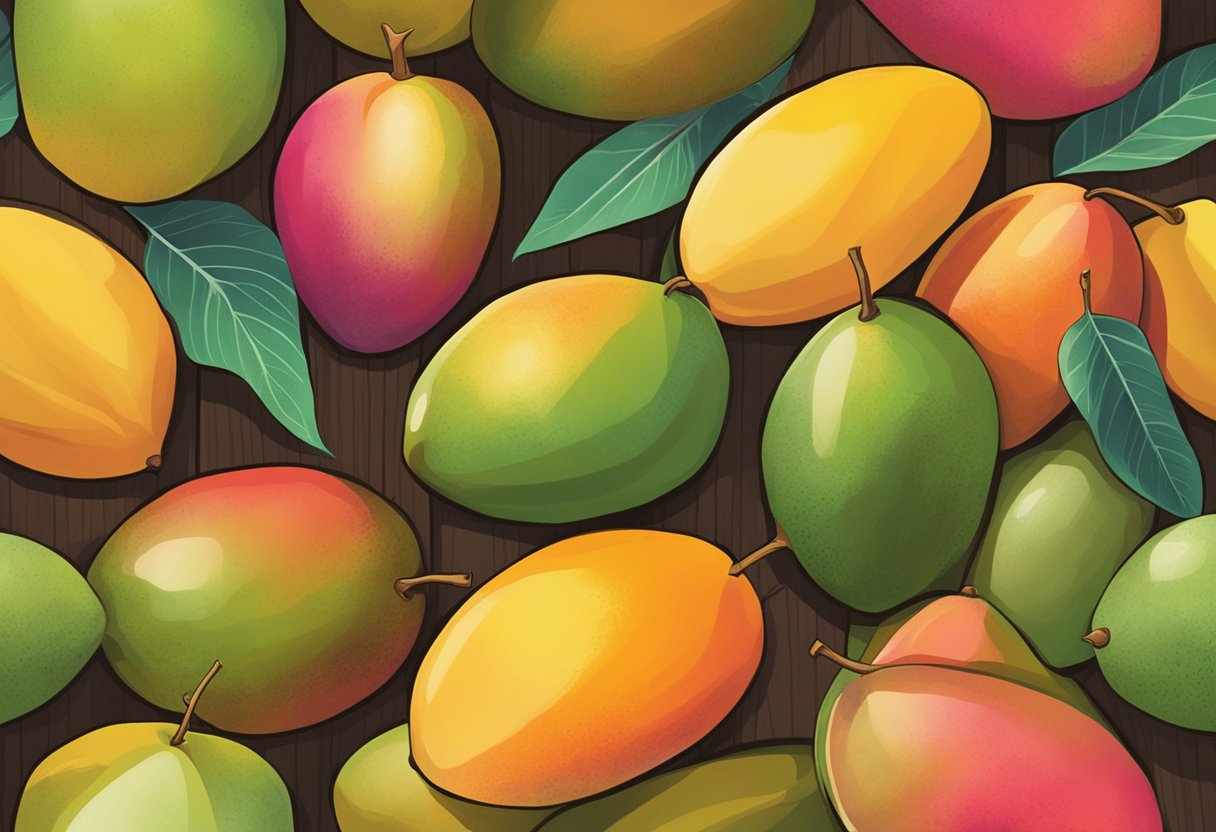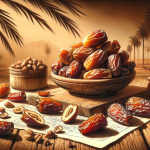Types Of Mangoes
Mangoes are a tropical fruit that are known for their sweet and juicy taste. They are often referred to as the “king of fruits” due to their popularity and delicious flavor. Mangoes are available in many different varieties, each with its own unique taste, texture, and color.
Popular varieties of mangoes include the Alphonso, Ataulfo, Haden, Kent, and Tommy Atkins. These varieties differ in their size, shape, sweetness, skin color, and flesh color. Some are known for their soft and juicy texture, while others are firmer and have a more fibrous texture. Each variety has its own distinct flavor profile, ranging from sweet and tangy to rich and buttery.
Mangoes are enjoyed in many different culinary applications, including smoothies, salads, salsas, and desserts. They are also used in traditional dishes from around the world, such as mango chutney and mango lassi. In addition to their delicious taste, mangoes are also packed with nutrients and health benefits. They are a good source of vitamins A and C, as well as fiber and antioxidants.
Key Takeaways
- Mangoes are a popular tropical fruit that come in many different varieties, each with its own unique taste and texture.
- They are used in a variety of culinary applications, from smoothies to traditional dishes.
- Mangoes are also packed with nutrients and health benefits, making them a delicious and healthy addition to any diet.
Popular Varieties of Mangoes

Mangoes are one of the most popular fruits in the world and come in a variety of shapes, sizes, and flavors. Here are some of the most popular varieties of mangoes:
Alphonso – The King of Mangoes
Alphonso is often referred to as the “King of Mangoes” and is considered to be one of the best varieties of mangoes in the world. It is known for its sweet flavor, smooth texture, and rich aroma. Alphonso mangoes are primarily grown in India and are widely used in making desserts, smoothies, and other culinary dishes.
Haden Mango
Haden Mango is a popular commercial variety of mango that is widely grown in Florida. It has a red skin and a sweet taste. The flesh is fiberless and has a yellow-orange color. Haden mangoes are perfect for eating fresh or for making smoothies.
Keitt
Keitt is another popular commercial variety of mango that is grown in Florida. It has an oval shape and a green skin that turns yellow as it ripens. Keitt mangoes have a fiberless flesh and a sweet flavor. They are perfect for eating fresh or for making smoothies.
Ataulfo – Honey Mango
Ataulfo, also known as Honey Mango, is a popular variety of mango that has a small, oval shape and a yellow skin. It has a fiberless flesh and a sweet taste. Ataulfo mangoes are perfect for making smoothies or for eating fresh.
Tommy Atkins
Tommy Atkins is a popular commercial variety of mango that is widely grown in Florida. It has a tart flavor and a fibrous pulp. The skin is red with green and yellow accents. Tommy Atkins mangoes are perfect for making chutneys or for use in culinary dishes.
In conclusion, mangoes are a delicious and versatile fruit that come in many different varieties. Whether you prefer a sweet or tart flavor, a fiberless or fibrous pulp, there is a mango variety out there for everyone.
Geographical Distribution
Mangoes are widely cultivated in tropical and subtropical regions around the world. The fruit is grown in over 100 countries, with the majority of production taking place in Asia, followed by Africa, South America, and the Caribbean.
Indian Mangoes
India is the largest producer of mangoes in the world, accounting for nearly half of the global production. The country is known for its wide variety of mango cultivars, including Alphonso, Dasheri, and Kesar. These mangoes are renowned for their sweet and juicy flavor and are exported to several countries around the world.
Caribbean Varieties
The Caribbean is home to several unique mango varieties, including Julie, Graham, and Carrie. These mangoes are smaller in size compared to their Indian counterparts, but are known for their intense flavor and aroma. Haiti is one of the largest producers of mangoes in the Caribbean, with the country’s mangoes being highly prized for their unique taste and texture.
South American Mangoes
South America is home to several large mango producing countries, including Brazil, Ecuador, and Peru. The mangoes grown in these countries are known for their large size and sweet flavor. Kent is a popular mango variety grown in Brazil, while the Tommy Atkins variety is commonly grown in Mexico and Guatemala.
Overall, mangoes are a diverse fruit that are enjoyed around the world for their unique flavor and texture. Whether you prefer the sweet and juicy Indian mangoes or the smaller, more flavorful Caribbean varieties, there is a mango out there for everyone to enjoy.
Culinary Uses
Mangoes are a versatile fruit that can be used in a variety of culinary applications. From desserts to savory dishes, mangoes add a sweet, tropical flavor to any recipe. Here are some popular culinary uses for mangoes.
Mango in Desserts
Mangoes are a popular ingredient in desserts, particularly in tropical regions. Ripe mangoes can be used to make a variety of desserts, including ice cream, sorbet, and pudding. Mangoes can also be added to cakes, pies, and tarts for a sweet and fruity flavor.
One popular dessert that features mangoes is mango sticky rice, a traditional Thai dessert made with sweet rice, coconut milk, and ripe mangoes. Another classic dessert is mango mousse, a light and fluffy dessert that is perfect for summer.
Savory Mango Dishes
Mangoes are not just for desserts – they can also be used in savory dishes. Mango salsa is a popular condiment that is often served with fish or chicken. It is made with ripe mangoes, red onion, cilantro, lime juice, and jalapeno peppers.
Mangoes can also be used in salads, adding a sweet and juicy flavor to greens and vegetables. Mango chutney is another popular condiment that is often served with Indian dishes, such as curries and samosas.
Mango Beverages
Mangoes are a popular ingredient in beverages, particularly in smoothies and juices. Mango lassi, a traditional Indian drink made with yogurt, mango, and spices, is a refreshing and healthy beverage that is perfect for hot summer days.
Mango smoothies are also a popular drink, often made with ripe mangoes, yogurt, and ice. Mango juice, which is made by blending ripe mangoes with water, is a popular drink in many tropical regions.
Overall, mangoes are a versatile fruit that can be used in a variety of culinary applications. Whether you are making a sweet dessert or a savory dish, mangoes add a sweet and tropical flavor that is sure to please.
Health Benefits
Mangoes are not only delicious but also packed with nutrients that offer several health benefits. Here are some of the key health benefits of consuming mangoes:
Rich in Fiber
Mangoes are an excellent source of fiber, which is essential for maintaining a healthy digestive system. A single mango contains about 3 grams of fiber, which is roughly 10% of the daily recommended amount. Both soluble and insoluble fibers are present in mangoes, which help to regulate bowel movements, prevent constipation, and maintain a healthy gut microbiome.
High in Vitamin A
Mangoes are also rich in Vitamin A, which is essential for maintaining healthy vision, skin, and immune function. One cup of sliced mango contains about 25% of the daily recommended amount of Vitamin A. Vitamin A is also known for its antioxidant properties, which help to protect the body against free radical damage.
Boosts Immune System
Mangoes are a great source of Vitamin C, which is essential for maintaining a healthy immune system. One cup of sliced mango contains about 76% of the daily recommended amount of Vitamin C. Vitamin C is also known for its antioxidant properties, which help to protect the body against infections and diseases.
Lowers Cholesterol
Mangoes contain compounds that have been shown to lower cholesterol levels in the blood. These compounds, known as pectin and fiber, help to reduce the absorption of cholesterol in the gut, which can lead to a decrease in blood cholesterol levels.
Overall, consuming mangoes as part of a healthy diet can provide several health benefits, including improved digestive health, boosted immunity, and reduced cholesterol levels.
Cultivation and Harvesting
Growing Conditions
Mangoes are tropical fruits that thrive in warm climates. They require an optimal temperature range of 70°F to 100°F (21°C to 38°C) for cultivation. Mango trees can be susceptible to frost damage, and planting should only occur where temperatures do not dip below freezing point.
Mangoes grow best in well-drained soils, with a pH range of 5.5 to 7.5. They require regular watering, especially during the flowering and fruiting stages. Mango trees can grow up to 100 feet tall, but most commercial cultivars are pruned to maintain a height of 15 to 20 feet for ease of harvesting.
Harvesting Techniques
Mangoes are harvested when they are fully mature but still firm. The fruit should be picked by hand, using a twisting motion to detach it from the tree. Mangoes should be handled with care to avoid bruising or damage to the skin.
Once harvested, mangoes should be stored at room temperature until they ripen. Ripe mangoes have a strong aroma and a soft texture. The color of the skin can vary depending on the cultivar, but most ripe mangoes have a yellow-orange hue.
Pest and Disease Management
Mango trees can be affected by various pests and diseases, such as mango malformation, biennial bearing, clustering, black tip, soft nose, spongy tissue, and mango hoppers. To prevent these issues, it is important to maintain good hygiene practices in the orchard, such as removing fallen fruit and pruning dead or diseased branches.
Chemical control methods can also be used to manage pests and diseases, but it is important to follow safe and sustainable practices to minimize environmental impact. Regular monitoring and early intervention can help prevent serious outbreaks and ensure a healthy harvest of high-quality fruit.
Overall, mango cultivation and harvesting require careful attention to growing conditions, harvesting techniques, and pest and disease management. With proper care, mango trees can produce abundant fruit that is prized for its sweet taste, strong aroma, and vibrant color.






